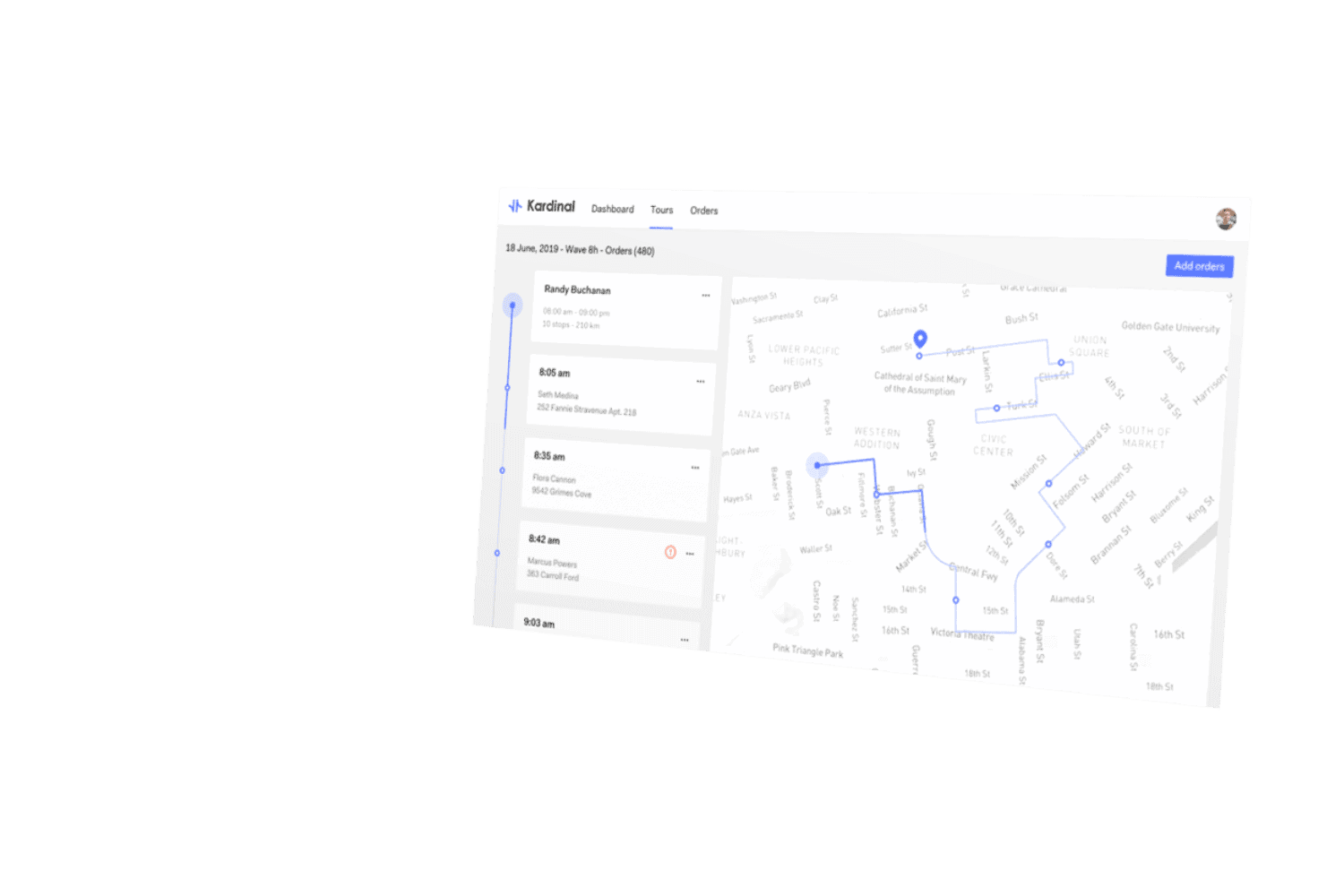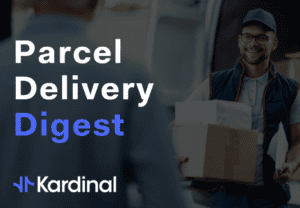Which solutions should be implemented to improve data quality?
- December 13, 2021
- 4 mins
[REPORT]
Data in route optimization: state of play, issues and best practices
As discussed in our previous articles on data for route optimization – to create the most efficient and realistic routes, the optimization software needs to have multiple data and of good quality. However, in practice, quality is often low: a lot of information is missing or incorrect, affecting the relevance of the routes.
Our goal is to raise awareness among operators to take care of their data and to immediately start data projects to better collect and store it. What solutions should be implemented to improve data quality? Where do you start and what are the best practices?
Here’s our advice to help you organize your data processes to better prepare for the implementation of external Artificial Intelligence solutions, including route optimization.
Internal data projects: challenges and best practices
Over the past few decades, the digitalization of the logistics industry has significantly transformed the way transport operations are organized. Today, logistics professionals are increasingly focused on the data they need to make decisions. This major change in the industry is becoming more and more understood by businesses, which now consider data to be a key element in their competitiveness.
The challenge is to modernize processes that are still very much conventional, some companies still fill in data by hand on Excel, or even on paper. The major players are generally the most digitalized, but some still collect data manually. In these transport companies, as in the parcel delivery industry, the drivers are not employees but service providers, which further complicates process transformation. For route optimization, subcontractors are legally independent in designing their delivery routes.
Going digital step by step
For a transportation company, digitizing its processes is a very important project that can quickly overwhelm teams and fail. Therefore, it is essential to target efforts and to start digitizing gradually, starting from the data already available (most companies have generally started IT projects). The best practice is to start your data project with small projects in terms of time and effort (few resources, small project team, local testing) by performing several iterations of increasing scope as the project unfolds. This allows you to acquire a true understanding of your data needs. A common pitfall is to try to digitize too quickly and too aggressively, turning the entire organization upside down without fully understanding the requirements.
Start with simple and practical use cases
To start a data project, we recommend identifying practical uses of data in the field. For example, it can be about telling customers the arrival time of their package in real time. This is an interesting project because it increases the quality of service perceived by the end customer. Depending on how the route unfolds, the deliveryman can warn customers of a potential delay as well as the estimated time of delivery by sending them a text message. This assumes that the customer’s phone number (or email) and the driver’s route schedule are known. However, this data is often not properly entered and kept up to date in the system. This is where it is important to educate the business teams. This way, they are challenged to fill in data properly, more consistently and without making mistakes.

Change management support
The everyday life of the teams can be significantly impacted, therefore it is essential to provide real support for change management. To achieve this, it is recommended to:
- Set up a dedicated team for the project, in charge of the implementation and monitoring the digitalization so it meets the needs of the business experts.
- Include the teams from the start of the project, get them involved and learn from their feedbacks.
- Show operational staff that their efforts are beneficial not only for customers but also for themselves and their daily work.
Short and simple projects at the beginning of the data project will quickly bring value to the company and its employees. By reporting practical results applied to field reality, operational staff will better understand their role in the success of the project. For example, if they make the effort to better collect addresses, the rate of delivery failure and the time wasted searching for the right address will be reduced. Better performance will also be observed if the recipient’s contact information or the opening hours of the businesses being delivered are properly entered into the system, thus reducing delivery failures.
The involvement of business teams is essential to the success of a data project. This type of project requires effort and time, but brings significant long-term benefits for the company, its employees and its customers.
Use external solutions to improve data quality
There are many tech solutions available to help transportation companies better collect and organize their data. In the case of postal addresses, autocompletion systems allow to avoid incorrect entries: the user does not have to enter the whole address, the system finds it by itself. These autocomplete addresses are also geolocated, which allows operators to make sure they have the right location.
Consider your optimization provider as a true partner
A route optimization software publisher, such as Kardinal, must also be able to support the client company in its transition and provide geocoding and data visualization tools. A software publisher must be much more than a software provider, it must be a true partner on these data issues: the carrier understands its data better thanks to the publisher’s expertise, which in turn improves its understanding of the client’s business. It is important to choose a software publisher that is interested in the carrier’s issues and challenges.
The support can also involve the integration of the solution, i.e. the connection of the information system containing the carrier’s data with the optimization software. Generally, the publisher has an integration standard but it is also possible to work with an integrator to make the link and ensure it is properly done.
A successful optimization project for Kardinal and its client
Kardinal’s teams worked on a project to optimize the routes of an operator who was performing hygiene sampling and auditing in public catering facilities (school canteens, hospitals, etc.). The major constraint of the project was the high complexity of planning due to the skills required for each intervention. Depending on the samples to be collected, very specific skills could be required. Aware of this constraint, the client had listed the skills of its operators in a regularly updated table. The contracts with the catering facilities specified the number of visits that had to be included in the routes and spaced out rationally. This client also kept a precise history of the interventions carried out, which is not common for transport companies.

However, to create relevant routes, Kardinal’s optimization solution lacked an important piece of data: the opening hours of the facilities to be visited. Simply using traditional schedules that could work most of the time is not enough, it is essential to have reliable and precise schedules. Depending on the type of sampling, it can be done in the morning, at noon, while the food is being prepared, or in the evening, once the kitchens are closed. The challenge was to list the opening hours for a thousand different facilities for each time of the year and for each day of the week, by type of sampling. Kardinal’s teams were impressed by the involvement of the client’s employees in collecting so much data: in two weeks, everyone was able to share their field knowledge, which internal data experts then compiled into one big file. Without this effort, relevant route optimization wouldn’t have been possible.
Continuous route optimization solution
The issue of data quality is a real challenge for transport companies. The digitalization of the industry has given them access to a huge amount of data, but it is important to collect and update it regularly. The involvement of the teams, especially the operational staff in the field, in this search for better data quality is decisive in the success of the projects carried out. These projects can require a lot of effort and time from the teams, yet their role is key to the future of their company: tomorrow’s companies will be those that have succeeded in mastering their data. It may therefore be relevant to include data quality (entered and updated) among the objectives of the company and its teams, in the same way as service quality.









